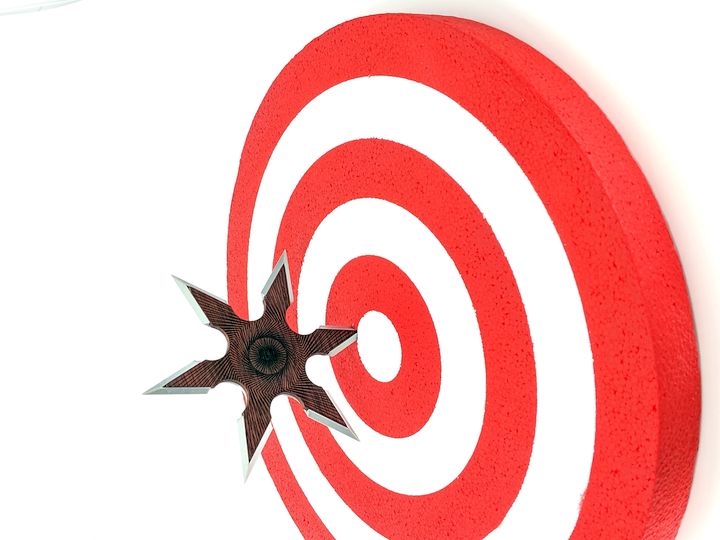![The Snapmaker 3D printer [Source: SolidSmack]](https://fabbaloo.com/wp-content/uploads/2020/05/image-asset_img_5eb0936f1bc94.jpg)
It’s no secret I love 3D printing, laser cutting, and CNC routing.
What I don’t love is all the maintenance and calibration of my own machines or questionable reliability and transit times to other people’s machines. And soooo many software programs — Talk about workflow woes. Hence my piqued interest in the upswell of 3-in-1 desktop fabrication machines. Molten hot plastic, sharp spinny things, and lasers. Oh my! The trifecta of safety glass-requiring, safety-oriented mom-hated, melded machinery.
Trying to combine different classes of products can result in mutant offspring with none of the progenitors’ unique benefits, like an El Camino. And there is a long history of over featurism resulting in so much #fail.
I want to believe in the 3-in-1. Through a creative combination of FDM printing, CNC machining, laser cutting, and some off-the-shelf hardware, I create comprehensive prototypes with amazing functionality and realism using minimal resources. The three processes have harmonious attributes that form a powerful ecosystem. And talk about the potential efficiency of one machine! Efficiency of software packages. Efficiency in cost. Efficiency in space utilization. Efficiency in freaking out my poor mom.
Will combining functionality result in the success of the Instapot or will it be a total not? Is mo’ features mo’ better or mo’ problems? Is this the dawn of the multifunction desktop fabrication factory? To find out, I got my maker mitts on the swiss army knife of digital making. The Snapmaker!
![The Snapmaker 3D printer kit ready for assembly [Source: SolidSmack]](https://fabbaloo.com/wp-content/uploads/2020/05/image-asset_img_5eb0936f6fac2.jpg)
Unboxing and Assembly
![What’s inside the Snapmaker 3D printer kit box [Source: SolidSmack]](https://fabbaloo.com/wp-content/uploads/2020/05/image-asset_img_5eb0936fb1264.jpg)
![What’s inside the Snapmaker 3D printer kit box [Source: SolidSmack]](https://fabbaloo.com/wp-content/uploads/2020/05/image-asset_img_5eb0937009734.jpg)
Unboxing was a delight. Everything neatly organized, accessories nicely boxed, bagged and labeled, and presented with just the right amount of cool hardware pieces exposed out front to entice high pitched giddy laughter. It took about 15 minutes to assemble the unit.
True, I am a Mechanical Engineer, with the dexterity of a brain surgeon. Give yourself 20 minutes if wearing oven mitts. While it is possible to assemble pieces incorrectly (Murphy’s Law), the documentation is pictorial and exceptionally clear. Big kudos for the design using mostly the same fasteners and all the same fastener heads for same tool installation (Design for Assembly). Personally, I put some low strength threadlocker on the threads.
![The Snapmaker 3D printer design [Source: SolidSmack]](https://fabbaloo.com/wp-content/uploads/2020/05/image-asset_img_5eb0937057a04.jpg)
![The result of my 15 minutes of work. The curly telephone cables give it a faintly throwback telephone hipster flair. [Source: SolidSmack]](https://fabbaloo.com/wp-content/uploads/2020/05/image-asset_img_5eb09370a0537.jpg)
So far, it’s a snap. Yep, I did that.
First Impressions
Call me old fashioned, but I love the look and feel of anodized CNC machined aluminum assembled with stainless socket head screws. It feels solid, clean, and premium. I’ll start with a comparison to commonplace consumer-grade printers. The frame on those printers is often sheet metal primarily and linear rails or general-purpose stock t-slot aluminum extrusions. The Snapmaker design uses a custom aluminum extrusion with enclosed lead screws for the frame and cartesian movement. This makes the frame exceptionally rigid, which is good for 3D printing and a necessity for subtractive manufacturing to overcome the resultant forces.
Read the rest at SolidSmack











FELIXprinters has released a new bioprinter, the FELIX BIOprinter, which is quite a change for the long-time 3D printer manufacturer.